
This is a resource from CPALMS (www.cpalms.org) where all educators go for bright ideas!
Resource ID#: 63976
Primary Type: Formative Assessment
Multiplying Polynomials - 1
Students are asked to multiply polynomials and explain if the product of polynomials always results in a polynomial.
General Information
Subject(s): Mathematics
Grade Level(s): 9, 10, 11, 12
Intended Audience:
Educators
Freely Available: Yes
Keywords: MFAS, polynomials, multiplication, product, like terms
Resource Collection:
MFAS Formative Assessments
Attachments
mfas_multiplyingpolynomials-1_worksheet.docxFormative Assessment Task
Instructions for Implementing the Task
This task can be implemented individually, with small groups, or with the whole class.
- The teacher asks the student to complete the problems on the Multiplying Polynomials - 1 worksheet.
- The teacher asks follow-up questions, as needed.
TASK RUBRIC
Accommodations & Recommendations
Special Materials Needed:
- Multiplying Polynomials - 1 worksheet
Source and Access Information
Contributed by:
MFAS FCRSTEM
Name of Author/Source: MFAS FCRSTEM
District/Organization of Contributor(s): Okaloosa
Is this Resource freely Available? Yes
Access Privileges: Public
Aligned Standards
Benchmark(s) of focus
The benchmark(s) of focus is the primary focus for student learning and instruction to be taught or reinforced and provides an intentional opportunity for students to work with that concept or skill.
| Name | Description |
| MA.912.AR.1.3: | Add, subtract and multiply polynomial expressions with rational number coefficients. Clarifications: Clarification 1: Instruction includes an understanding that when any of these operations are performed with polynomials the result is also a polynomial. Clarification 2: Within the Algebra 1 course, polynomial expressions are limited to 3 or fewer terms. |


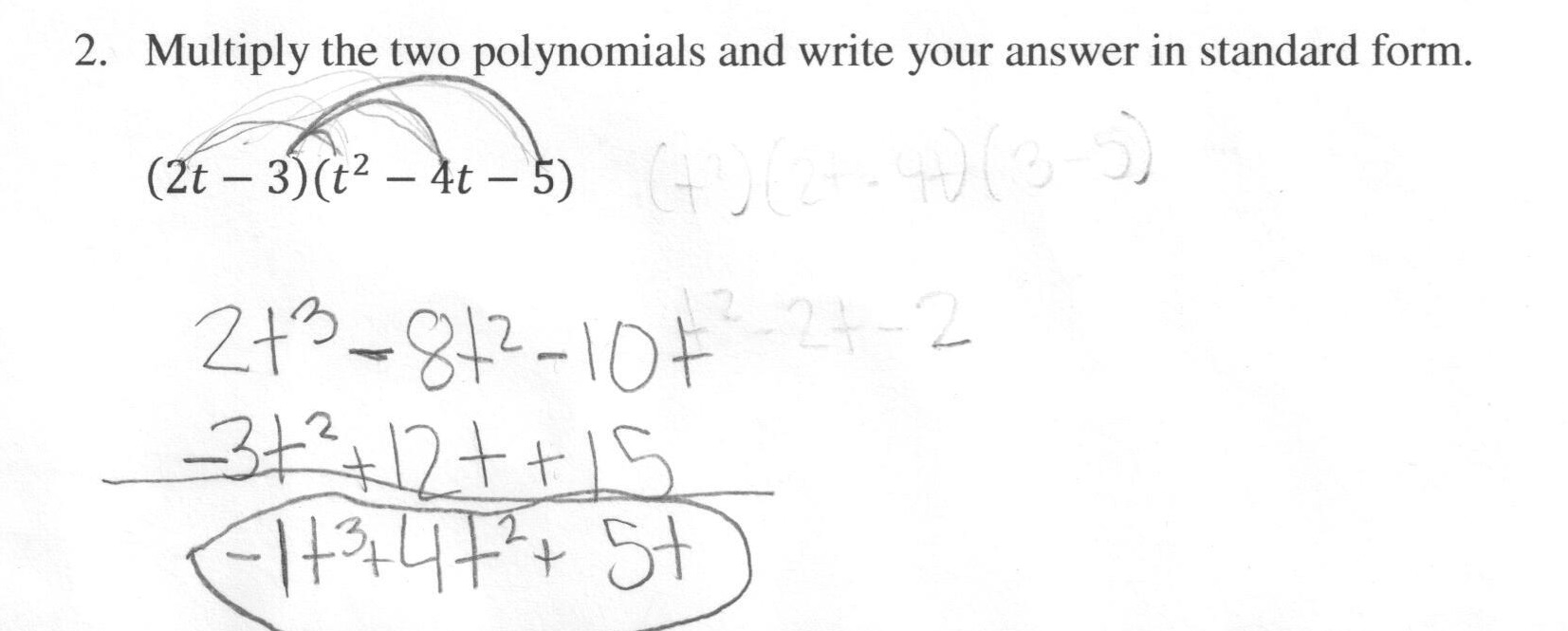

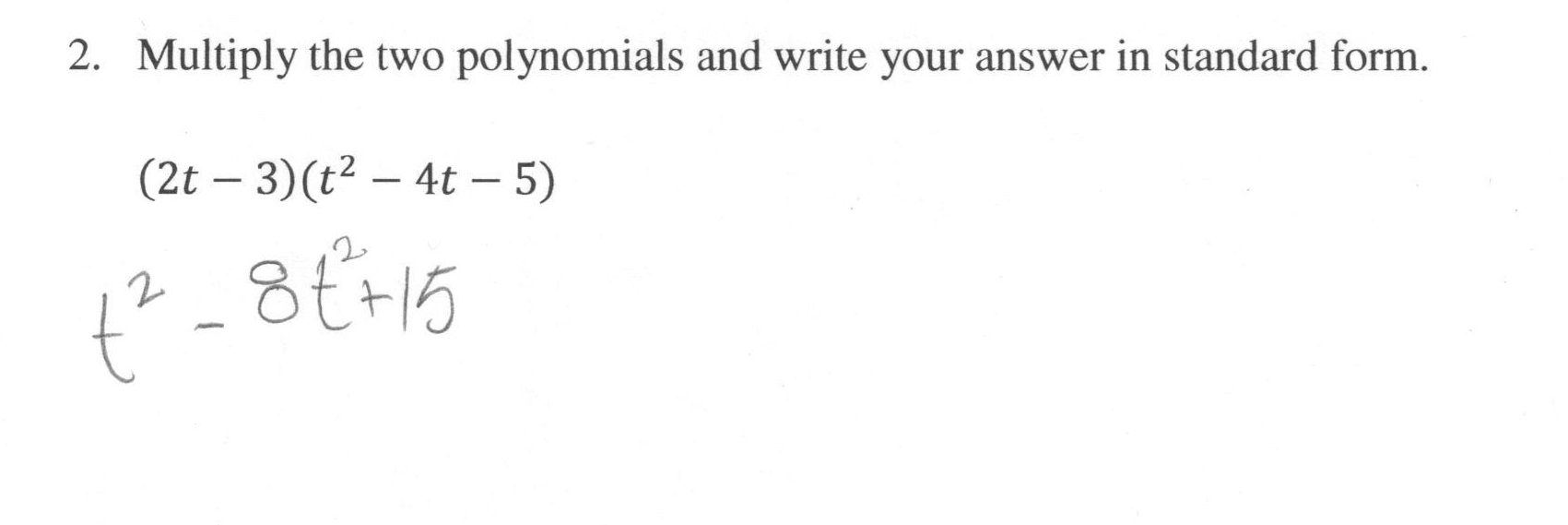
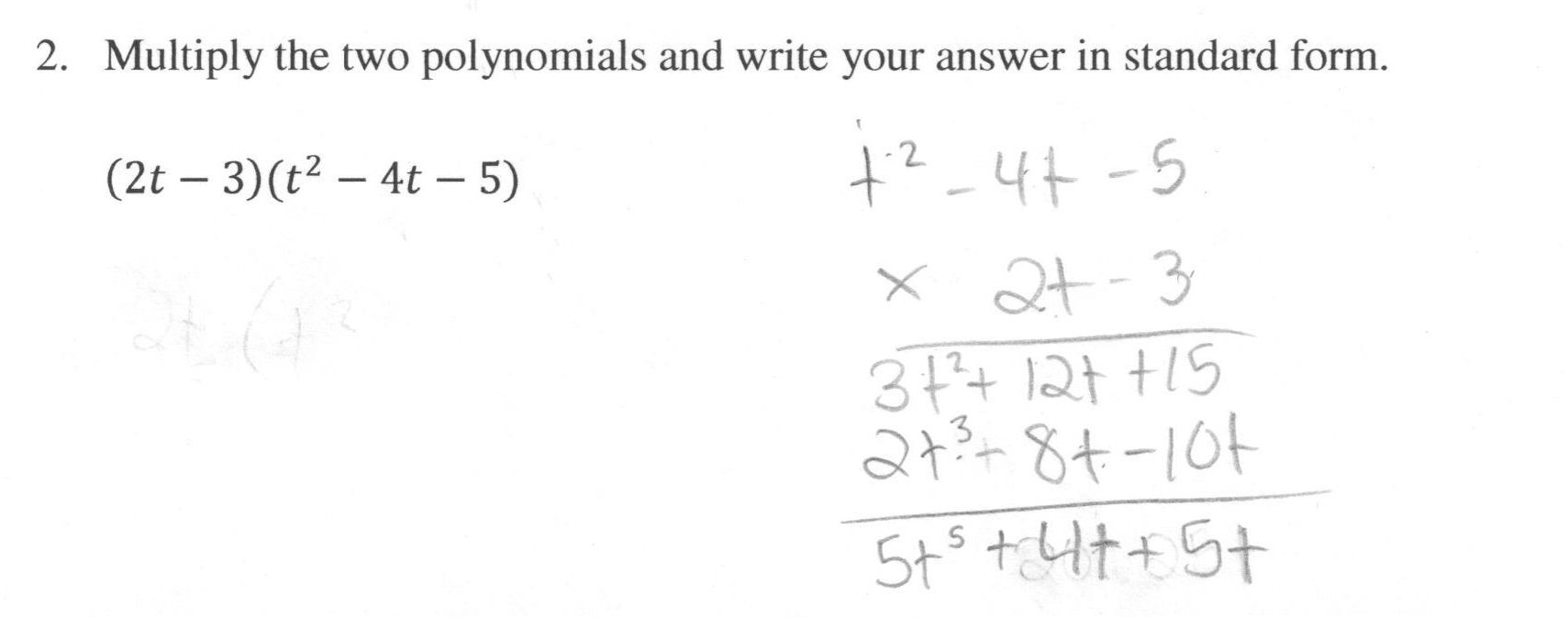
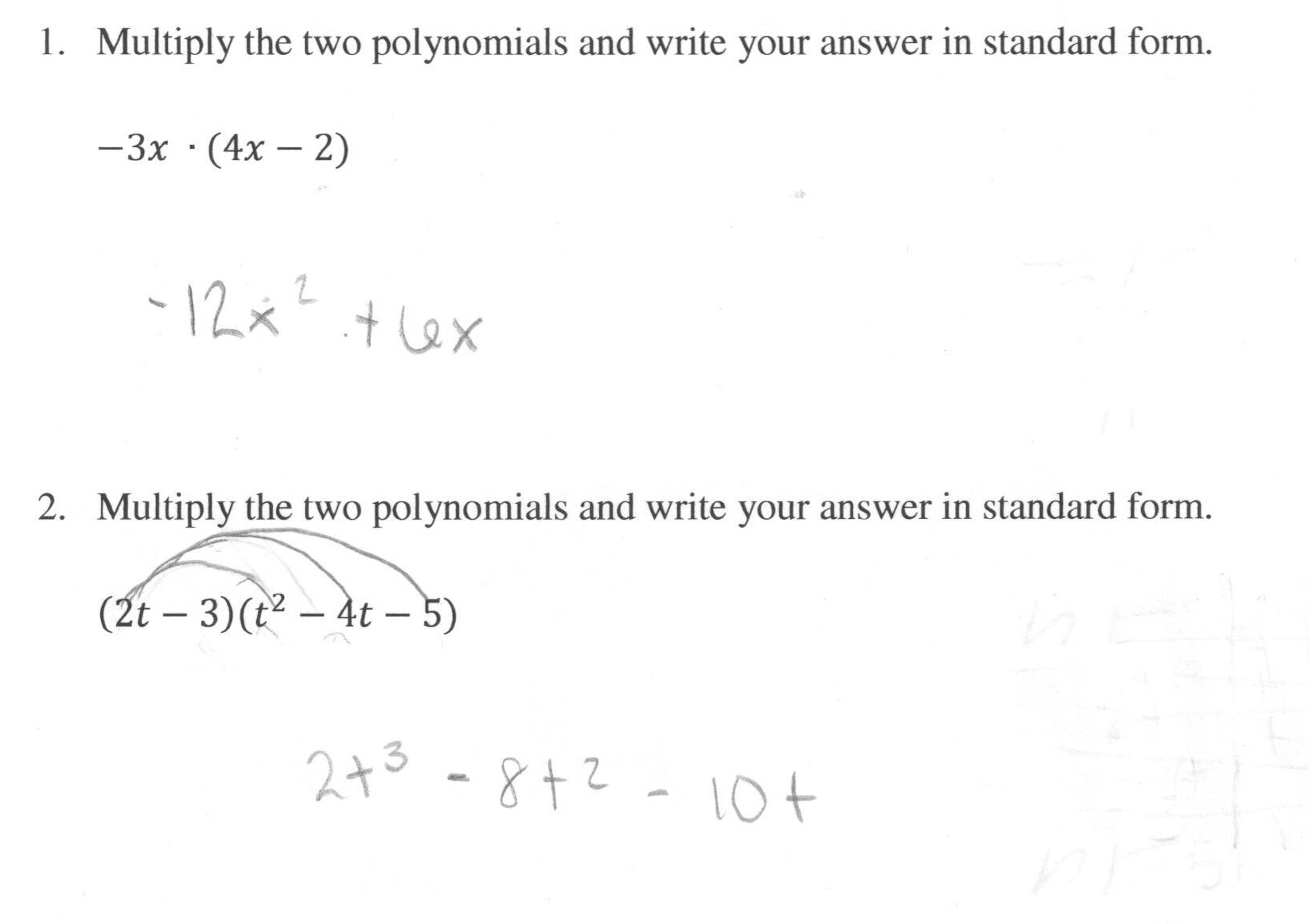
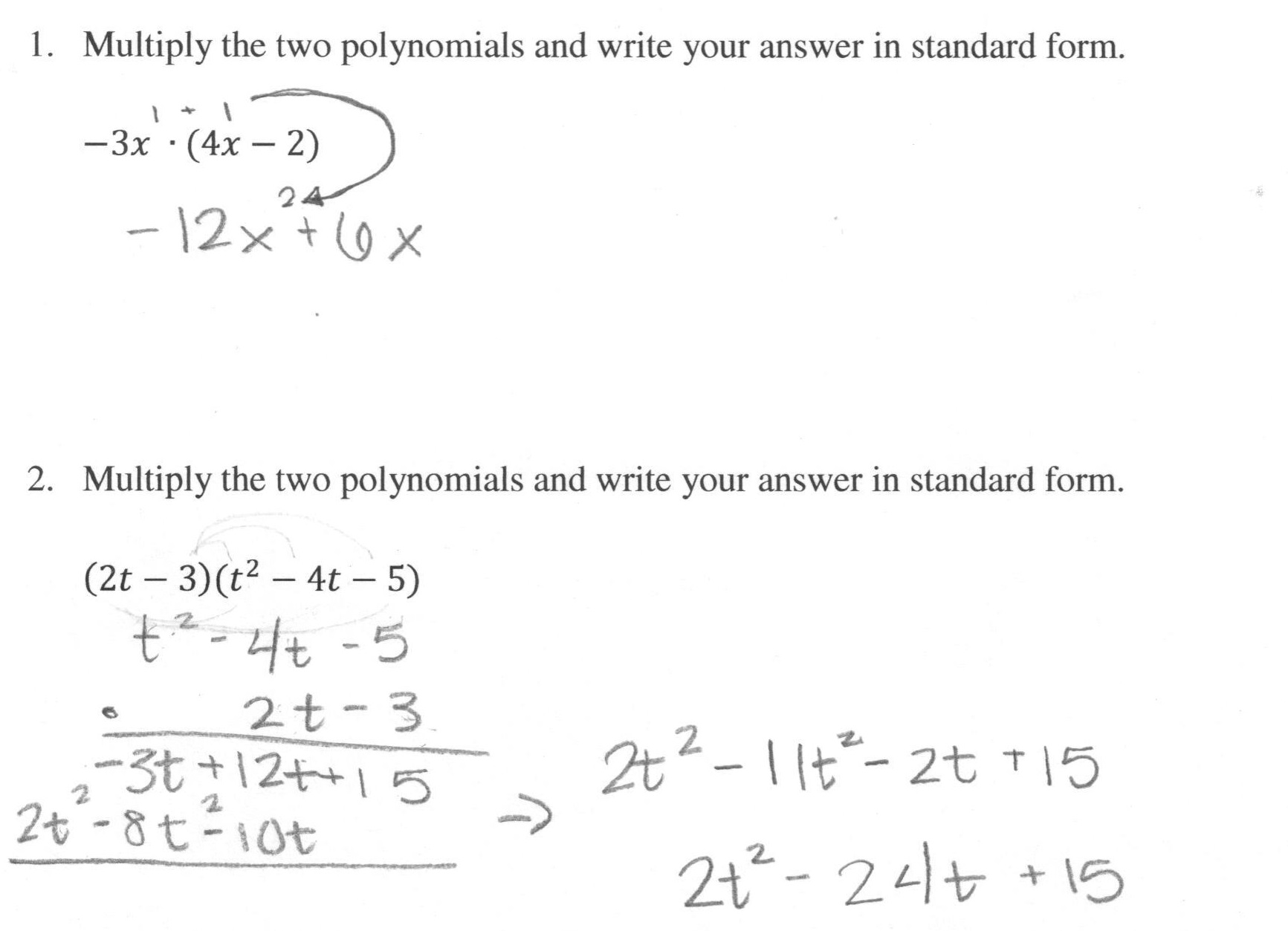
 , what is the product?
, what is the product?


 where a is a real number and n is a whole number. The prefix poly can be misleading since a polynomial may have only one term which could be a constant, including zero. Provide additional examples and non-examples of polynomials (e.g., 0,
where a is a real number and n is a whole number. The prefix poly can be misleading since a polynomial may have only one term which could be a constant, including zero. Provide additional examples and non-examples of polynomials (e.g., 0,  ,
,  , 3, y - 9,
, 3, y - 9, ). Ask the student to identify the examples of polynomials and explain why each non-example fails the definition.
). Ask the student to identify the examples of polynomials and explain why each non-example fails the definition. and
and  (where a and b are real numbers and m and n are whole numbers),
(where a and b are real numbers and m and n are whole numbers),  . Since the real numbers are closed for multiplication, (a · b) is a real number. Since the whole numbers are closed for addition, (m + n) is a whole number. Therefore, multiplying terms of polynomials results in terms that fit the definition of a polynomial, [i.e., (a · b) is a real number and (m + n) is a whole number].
. Since the real numbers are closed for multiplication, (a · b) is a real number. Since the whole numbers are closed for addition, (m + n) is a whole number. Therefore, multiplying terms of polynomials results in terms that fit the definition of a polynomial, [i.e., (a · b) is a real number and (m + n) is a whole number].

 . Since the real numbers are closed for multiplication, (a · b) is a real number. Since the whole numbers are closed for multiplication (m + n) is a whole number. Therefore, multiplying terms of polynomials results in terms that fit the definition of a polynomial.
. Since the real numbers are closed for multiplication, (a · b) is a real number. Since the whole numbers are closed for multiplication (m + n) is a whole number. Therefore, multiplying terms of polynomials results in terms that fit the definition of a polynomial.